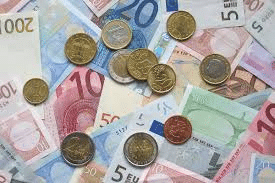
Not long ago, cash was king. Today, it’s more like a guest of honor present, but increasingly irrelevant. In cafés, matatus, markets, and even churches, money is moving from paper to pixels. Welcome to the age of the cashless economy, where your phone is your wallet, your bank, and sometimes even your paycheck.
Globally, the shift is happening fast. But in Kenya, we’re not just catching up, we’re leading the way.
How Kenya Became a Cashless Pioneer
Long before Apple Pay and Venmo made waves in the West, Kenya had already changed the global conversation about money. The launch of M-Pesa in 2007 by Safaricom transformed how millions of people send, save, and spend. It allowed even those without traditional bank accounts to participate in the economy.
Today, over 90% of adults in Kenya use mobile money, making it one of the most cashless societies in the world.
You can buy groceries, pay rent, settle school fees, contribute to a chama, or tip your boda guy all without touching a single coin. M-Pesa has inspired dozens of copycats across Africa and even as far as India and Eastern Europe.
The Global Momentum
Beyond Kenya, countries around the world are sprinting toward digital finance:
- Sweden plans to be fully cashless by 2030. Most of its population already prefers cards or mobile payments.
- China’s mobile payment scene dominated by Alipay and WeChat Pay handles trillions in transactions.
- Cryptocurrencies and stablecoins are emerging as alternative forms of money, particularly in countries facing inflation or financial instability.
Cash, it seems, is becoming more of a backup plan than a primary method.
The Pros: Why a Cashless World Makes Sense
- Convenience: No need for wallets or ATM lines. Everything is instant and portable.
- Security: Reduces theft, counterfeiting, and the risk of carrying large sums of money.
- Transparency: Easier to track spending, collect taxes, and curb corruption.
- Financial Inclusion: Mobile money opens the door for the unbanked to save, invest, and grow.
But There’s a Flip Side
A cashless future isn’t without risk especially in countries where digital inequality persists.
- Data and privacy concerns: Who controls your financial data? And how secure is it?
- System failures: What happens when the app goes down or the power is out?
- Digital exclusion: Older adults, low-income earners, or those in remote areas may struggle to keep up.
- Over-surveillance: Digital transactions can make citizens more visible to governments, both good and bad.
In Kenya, despite our progress, millions still rely on cash for small daily transactions. Not everyone has a smartphone. Not everyone trusts digital systems.
Enter CBDCs — The Next Evolution?
Central Bank Digital Currencies (CBDCs) are being tested by financial institutions worldwide including Kenya’s Central Bank, which has explored the idea of a digital shilling.
Unlike crypto, CBDCs are state-backed and could offer faster, cheaper, and safer transactions. But questions remain: How will they affect banks? Privacy? Inflation?
What’s Next for Kenya?
Kenya stands at a unique crossroads. With a youthful, tech-savvy population and a proven appetite for innovation, we could shape the future of digital finance in Africa, if we address gaps in digital literacy, regulation, and cyber-security.
Tech startups are already stepping up. Apps like Tala, Branch, Chipper Cash, and Flutterwave are offering digital loans, cross-border payments, and merchant services, creating a new kind of financial ecosystem.
Ready or Not, the Future is Digital
The question isn’t whether the world will go cashless, it’s how soon, and at what cost. For some, it’s a seamless lifestyle upgrade. For others, it’s a slippery slope of exclusion and surveillance.
In Kenya, the revolution has already begun. We just have to make sure everyone gets to join the ride.
So are we ready for a cashless world?
In many ways, we already live in one. The real challenge is making it work for everyone, not just the connected, but the collective.




